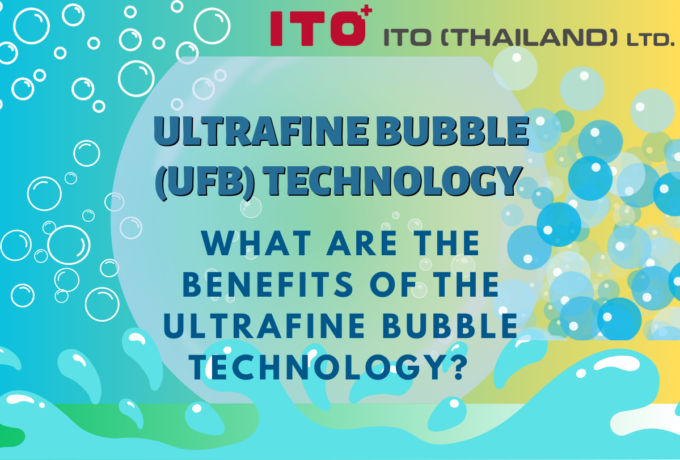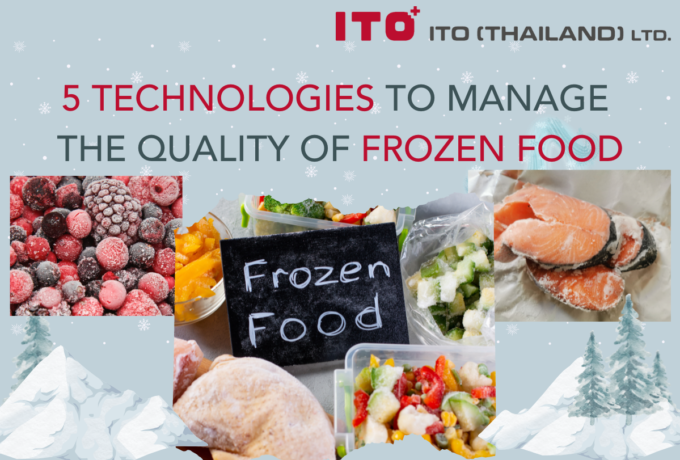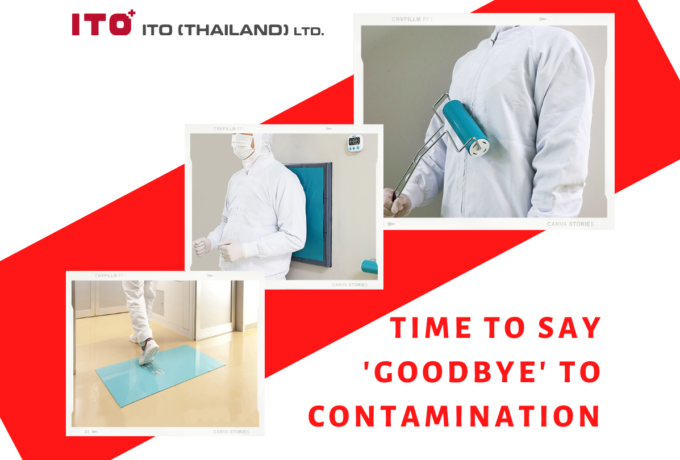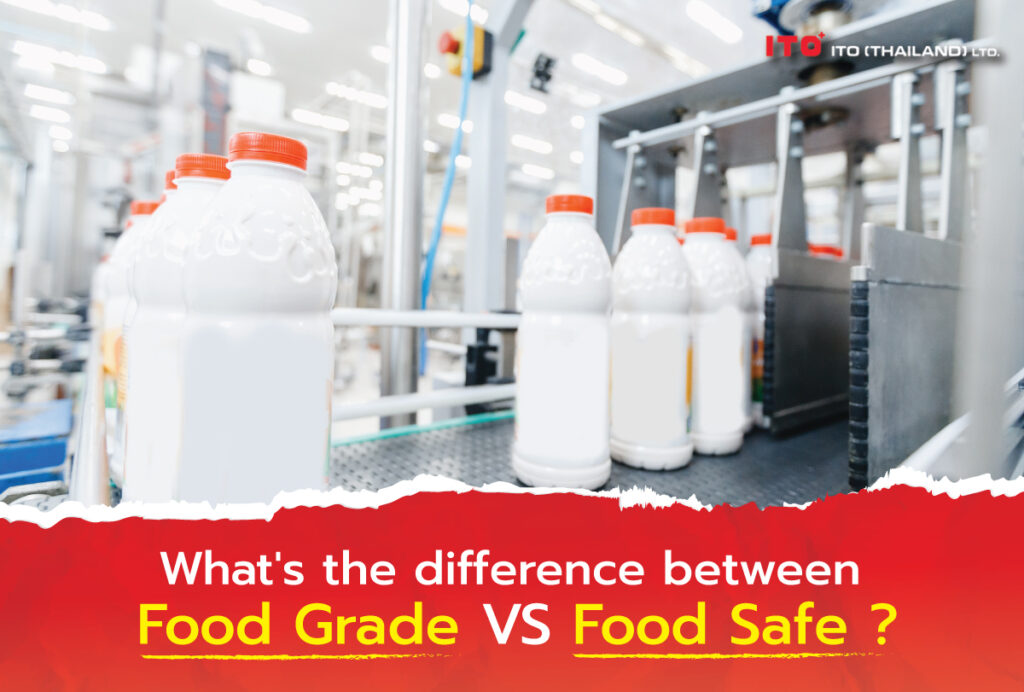ITO Thailand Hygiene Blog
Food grade material
The use of non-food grade materials poses a risk of contamination in our daily lives. For example, the main raw material used in the production of plastic food containers is polycarbonate, which contains the Bisphenol A chemical or BPA that has the property to help those containers to be stronger, resistant to breakage, and add more beauty and clarity. However, if used for a period of time and the material deteriorates through high heat, BPA can penetrate and contaminate food, which has a negative impact on the body, especially to endocrine system, production of estrogen, reproductive system, and also increasing the risk of obesity, heart disease, diabetes, breast cancer, prostate cancer and so on. The hazard level is much more severe in infants because children weigh less than adults and get BPA contamination from milk bottles. [2][3]
Another clear example is Phthalate, a chemical used to enhance the softness and flexibility of plastics, which is also widely used in packaging like BPA. People often get Phthalate from consuming food or beverages contaminated with Phthalate or breathing Phthalate particles in the air. The most at risk group is children because they tend to run, play, crawl and touch things, then put their hand into their mouth, therefore more at risk than adults. However, human body can excrete Phthalate through urine, and there have been reports of Phthalate contamination in women more than men because Phthalate is often an ingredient in products such as soaps, shower creams, shampoos, cosmetics and so on. The dangers of Phthalate to humans are still being researched for its harmful effects on the body, such as how much harm it will cost to reproductive system and development of the fetus. [2][4] As a consumer, we can easily reduce the risk by purchasing a container marked “BPA free” and “Phthalate free.”
Materials suitable for being considered “Food grade” usually do not contain any toxic substances or ingredients that can mix into food or cause harm. They are strong, durable for use, and can be cleaned thoroughly, have no holes or dead spots that are at risk of accumulation of food waste and the growth of pathogenic microorganisms. One of the most popular food grade materials in the food industry is stainless steel.
There are many grades of stainless steel such as stainless steel grade 316 (SUS 316), stainless steel grade 304 (SUS 304) and so on. The factor that affects the choice of stainless steel grade is its chemical and corrosion resistance, which we need to choose the right one for the job. For example, stainless steel grade 316 costs more and is more resistant to corrosion than stainless steel grade 304, so operators often choose stainless steel grade 316 for equipment or areas that come into direct contact with food especially foods that are highly acidic such as mixing tank area, and choose the more affordable stainless steel grade 304 to save money for parts of equipment that do not come into direct contact with food, such as machine structures or parts that can be used in direct contact with food as well in the case of low acidity food. Besides, there are also subgrades such as grade 304L with reduced carbon content. This helps reduce carbide precipitation and reduce corrosion during welding. Therefore, grade 304L is often used due to welding reason although it has less strength than grade 304. Another example is grade 304H with the addition of a carbon element. As a result, it is more resistant to temperatures than grade 304, so grade 304H is often used in high-temperature conditions.
In the reality, we have to admit that stainless steel grade 304 is often more popular than stainless steel grade 316 because it is less expensive and therefore more accessible. It is resistant to general corrosion, can be cleaned easily and can maintain sustainable sanitary conditions. ITO THAILAND has a product list which meets the needs of the manufacturer. We use stainless steel grade 304 in the components of our products which are suitable for food factories such as Dust cleaner, Boot cleaner, Metal detector, Weight checker and system, Barcode reader and many more to meet customer requirements.
And we also have consulting service including problem solving in the food factory as required, as well as providing training on hygiene principles and also providing comprehensive after-sales service to develop and improve safety systems for food manufacturing and processing factories in order to have a food safety society, meet international standards, and be able to compete internationally.
References
1.Food care. Food Grade vs Food Safe – What is the difference? [Internet]. 2020 [cited 19 Mar 2022]. Available from https://www.foodcare.com.au/blog/post/Food-Grade-vs-Food-Safe-What-is-the-difference?
2.Is plastic food packaging dangerous? [Internet]. 2014 [cited 19 Mar 2022]. Available from https://www.choice.com.au/food-and-drink/food-warnings-and-safety/plastic/articles/plastics-and-food
3.Catherine Viguié, Sakina Mhaouty-Kodja, René Habert, Cécile Chevrier, Cécile Michel, Elodie Pasquier. Evidence-based adverse outcome pathway approach for the identification of BPA as en endocrine disruptor in relation to its effect on the estrous cycle, Molecular and Cellular Endocrinology, Volume 475, 2018, Pages 10-28, ISSN 0303-7207, https://doi.org/10.1016/j.mce.2018.02.007. (https://www.sciencedirect.com/science/article/pii/S0303720718300674)
4.Centers for Disease Control and Prevention. Phthalates Factsheet [Internet]. 2021 [cited 19 Mar 2022]. Available from https://www.cdc.gov/biomonitoring/Phthalates_FactSheet.html
Related Post
-

Liquid nitrogen in food industry
You maybe have heard that liquid nitrogen can rapidly freeze the food, haven’t you? And what are its advantages and benefits? Let's get to know the liquid nitrogen in food industry with ITO (Thailand).
-

Ultrafine bubble (UFB) technology (Part 2)
The previous content has discussed the benefits of the ultrafine bubble technology in agriculture, livestock, and fisheries, cleaning raw materials and various surfaces. Today, we will continue to learn about the use of the ultrafine bubble technology in food production processes and waste management from the food industry and how to create these tiny gas bubbles.
-

Ultrafine bubble (UFB) technology (Part 1)
Simple bubbles when transformed into the micro-nano level can do more than you think. Let's learn about the technology of these tiny bubbles and their application in the food industry with ITO (Thailand).
-

Frozen food storage management
Freezing is a method of food preservation commonly used in food that goes bad quickly such as ready-to-cook fresh food, ready meals, or foods in which nutritional values decay easily, or have substances that are sensitive to temperature, light, oxygen, etc. Freezing uses a principle of quickly solidifying water in the products, making the molecules of the substances unable to react to one another, thus the foods last longer. It also suppresses the growth of microorganisms and kills parasites. For instance, USFDA suggested controlling parasites in fish consumed raw such as sushi and sashimi by freezing the fish at the minimum of 20 degrees Celsius for 7 days or stored at -35 degrees Celsius for 15 hours to control parasites in fish (conditions may depend on the size of the fish as well).
-

Boot Cleaner
Pay attention to the hygiene of the footwear for good hygiene in the food industry
-

Innovation for sustainable physical contamination prevention
It is known that external impurities pose a food safety risk. One of the main channels of contamination is the presence of humans as a carrier of dust and dirt into the production or high-risk areas, causing dirt, germs, or foreign matters to contaminate food and harm consumers.










